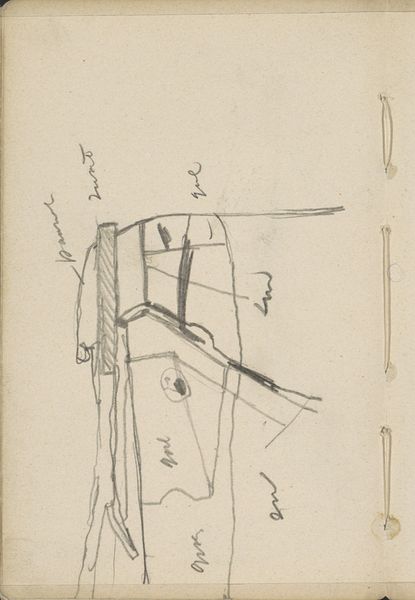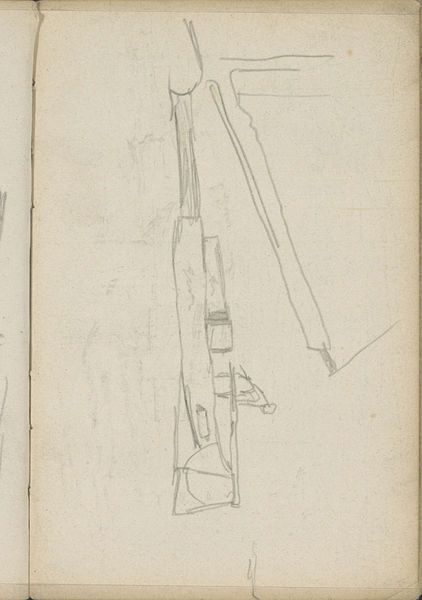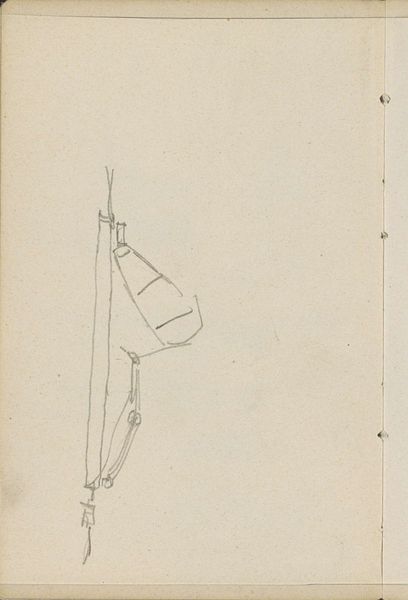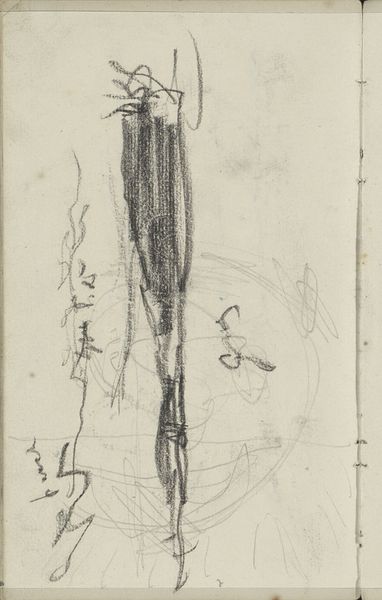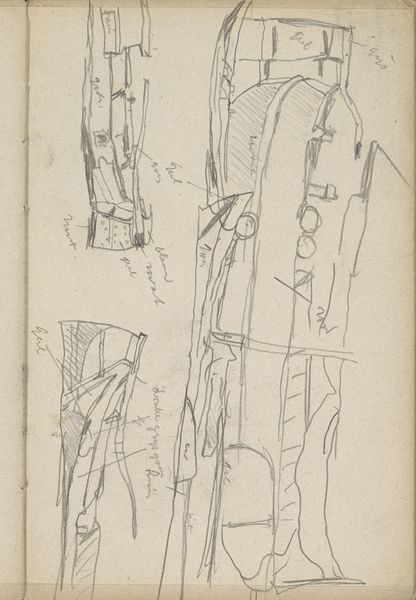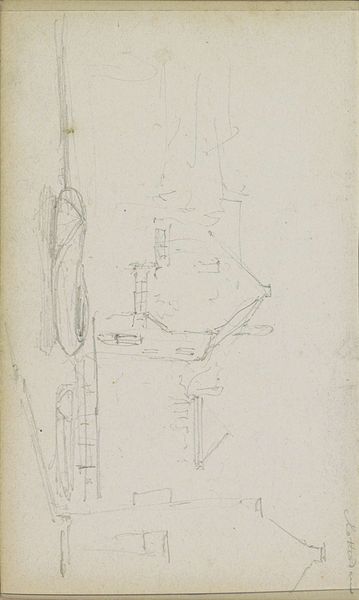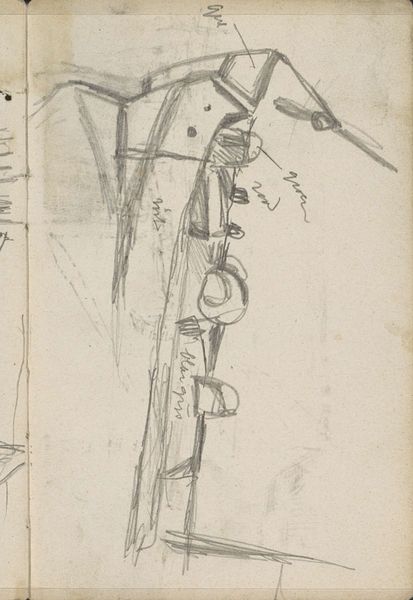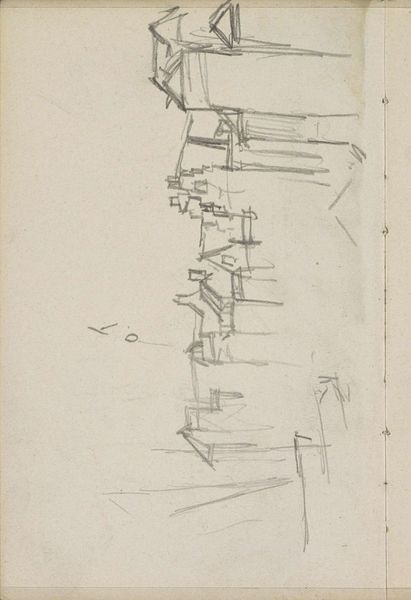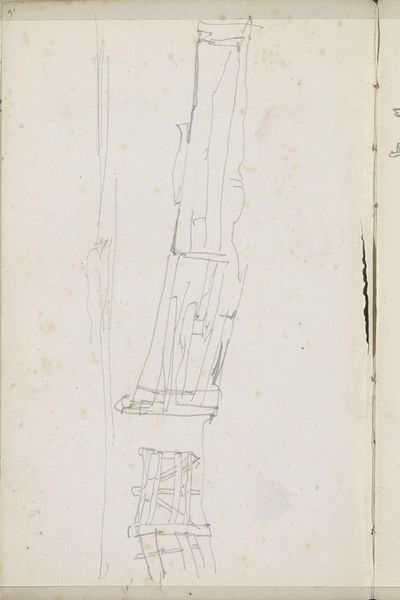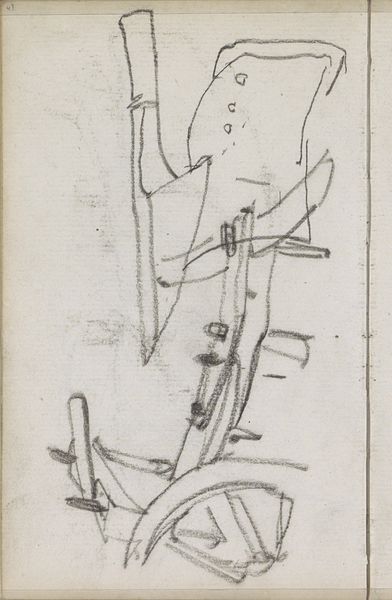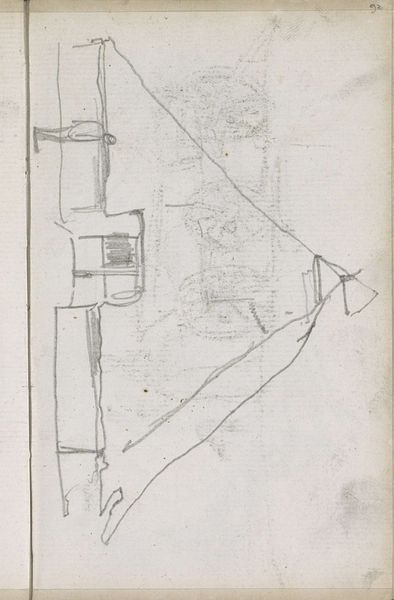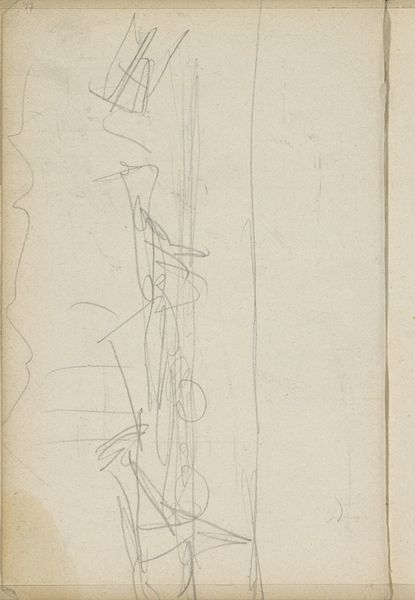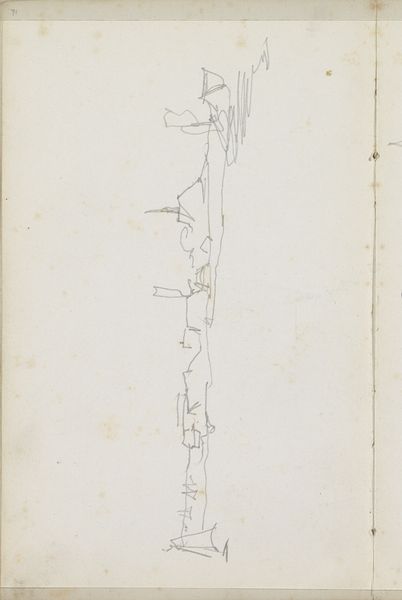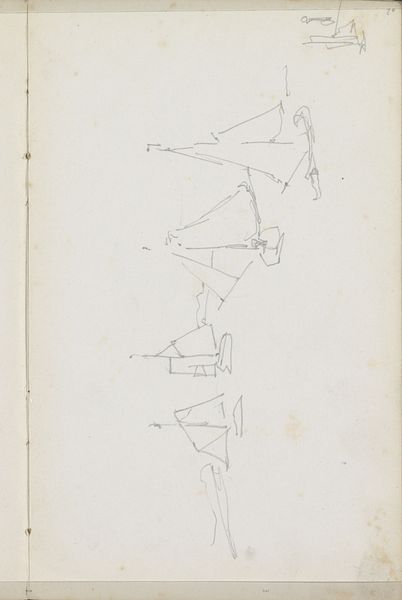
Copyright: Rijks Museum: Open Domain
Curator: This quick pencil drawing is titled "Boten", dating back to 1912, part of George Hendrik Breitner's sketchbook. What's your initial take? Editor: It's raw, a fleeting impression captured with minimal strokes. I immediately notice the linear quality; the forms are almost architectural, like a structure built from simple lines. There's a real economy of means. Curator: Breitner was known for capturing the everyday life of Amsterdam, and these sketches provide invaluable insights into his process. Consider the accessibility of the materials - a simple sketchbook and pencil, tools available to almost anyone wanting to record their surroundings. Editor: Exactly. Looking closely, one can see how the hatch marks define shadow and volume, and I suspect that the notes scrawled near the image are color notes, a direct record of observed reality. Semiotically speaking, they anchor the abstraction of the lines to tangible things in the world. Curator: These personal sketchbooks challenge our typical idea of a finished artwork, shifting the focus toward the means of production. We're getting to observe Breitner's working method - how he explores compositions and figures prior to embarking on a painting. This shows us how the idea developed over time through different sketches and how it finally took shape. Editor: The page itself functions as a field of experimentation. It reminds us that artworks are created through the work of labor and they represent the ideas being conveyed by the artist and experienced by the spectator through visual cues such as lines, structure, colour, or shape Curator: Viewing this drawing in the Rijksmuseum today provides a window into a specific historical context. We can examine how Breitner engaged with his environment. It makes you reflect on the way ordinary objects of past periods of time are made and preserved across different contexts. Editor: The directness appeals to me. We are viewing, quite simply, a visual document—the architecture is interesting and gives us the structure with form and meaning. There is a kind of balance in the distribution of all those lines on the support that keeps us looking and exploring every little segment with precision and order. Curator: Agreed, there's something immediate about encountering an artist's initial thought. A glimpse into the gears turning, so to speak. Editor: Precisely. It’s in these direct observations, these formal arrangements, that art transcends mere utility and speaks to something deeper.
Comments
No comments
Be the first to comment and join the conversation on the ultimate creative platform.
